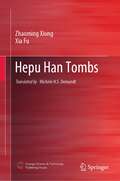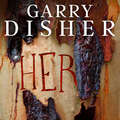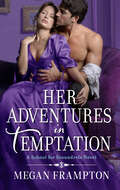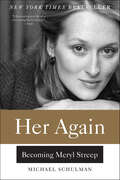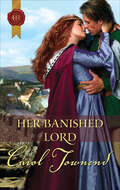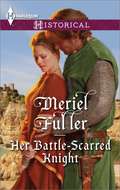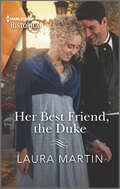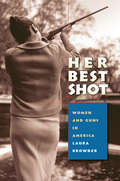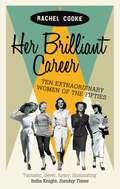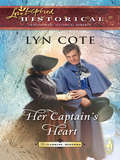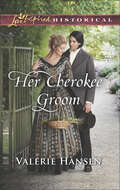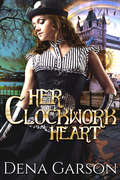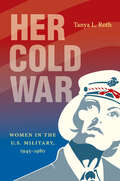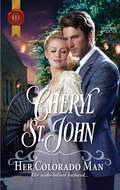- Table View
- List View
Hepu Han Tombs
by Zhaoming Xiong Xia FuThis is the first book to systematically study the Hepu Han Tombs. Covering an area of about 68 square kilometers, the Hepu Han Tombs is one of the largest-scale and best-preserved ancient tombs in China. In 2001, the remains of 1,056 grave mounds could be seen on the earth surface and it was estimated that almost 10,000 tombs still survived underground. In the last 60 years, over 1,200 tombs have been excavated at Hepu, with approximately 20,000 artefacts unearthed which include pottery, bronze, iron, gold and silver ware, jade, lacquer, glass and bead ornaments. Especially to deserve to be mentioned, a large amount of artefacts can be related to the Maritime Silk Road. From the 2nd century B.C. to the 3rd century A.D., the Hepu Port served as the eastern starting point of the Maritime Silk Road, opening up trade and cultural exchange with countries in Southeast Asia, South Asia, West Asia, and the Mediterranean world, which resulted in a vast maritime trade network between China and the West. And these artefacts provide important evidence about this route, which also confirm the records of Chinese official history books. Therefore, the Hepu Han Tombs is of great significance to the study of ancient Chinese history and cultural exchanges between China and the West.
Her
by Garry DisherOut in that country the sun smeared the sky and nothing ever altered, except that one day a scrap man came by . . . HER name is scarcely known or remembered. All in all, she is worth less than the nine shillings and sixpence counted into her father's hand.She bides her time. She does her work.Way back in the corner of her mind is a thought she is almost too frightened to shine a light on: one day she will run away.A dark and unsettling tale from the turn of the twentieth century by a master of Australian literature.
Her Abundant Joy (Texas: Star of Destiny, Book 3)
by Lyn CoteIn 1846, young widow Mariel survived the grueling voyage from Germany to start a new life in the "promised" land of ?Texas. Forced by circumstances to become a servant, Mariel is now determined to leave her harsh master. But how can a single woman face the frontier on her own? Texas Ranger Carson Quinn is responsible for leading Mariel's party of German immigrants safely through dangerous Comanche-held territory. As he watches Mariel hold her head high in spite of everything, he knows he will do anything to protect her. But war is brewing: Mexico will not accept the U.S. annexation of the young Texas Republic without a fight. Honor bound to defend Texas, Carson's deepest longing is to lay down his rifle and forge a future with Mariel. As he struggles to determine God's path for him, Mariel watches the man she loves torn in two. Will the tide of history keep them from giving their love a chance?
Her Adventures in Temptation: A Novel (School for Scoundrels #3)
by Megan FramptonIn this newest addition to the School for Scoundrels series, Simeon Jones and Lady Myrtle Allen tell all the ton that they are engaged to be wed, fully knowing that once the season is over they will quietly part ways. They each have their reasons, but neither expected love to tempt them into turning a pretense into reality!Simeon Jones has a secret—he is soft-hearted. Despite his scandalous exterior, he will quietly give money to orphans (after all, he was one himself), animals, and damsels in distress. One such damsel is Lady Myrtle Allen—but it’s not her funds that are lacking, but rather she needs to get to London—fast.And so begins a wild adventure. First, the pair tells all the ton that they are engaged to be wed—how else to prevent scandal once they are found together—alone! They plan to carry out this deception, fully knowing that once the season is over, they will quietly part ways. But then, they discover that they have fallen in love, which was definitely not part of their plan! Can this scandalous man and adventurous woman turn this pretense into reality?
Her Again: Becoming Meryl Streep
by Michael SchulmanA portrait of a woman, an era, and a profession: the first thoroughly researched biography of Meryl Streep that explores her beginnings as a young woman of the 1970s grappling with love, feminism, and her astonishing talentIn 1975 Meryl Streep, a promising young graduate of the Yale School of Drama, was finding her place in the New York theater scene. Burning with talent and ambition, she was like dozens of aspiring actors of the time—a twenty-something beauty who rode her bike everywhere, kept a diary, napped before performances, and stayed out late “talking about acting with actors in actors’ bars.” Yet Meryl stood apart from her peers. In her first season in New York, she won attention-getting parts in back-to-back Broadway plays, a Tony Award nomination, and two roles in Shakespeare in the Park productions. Even then, people said, “Her. Again.”Her Again is an intimate look at the artistic coming-of-age of the greatest actress of her generation, from the homecoming float at her suburban New Jersey high school, through her early days on the stage at Vassar College and the Yale School of Drama during its golden years, to her star-making roles in The Deer Hunter, Manhattan, and Kramer vs. Kramer.New Yorker contributor Michael Schulman brings into focus Meryl’s heady rise to stardom on the New York stage; her passionate, tragically short-lived love affair with fellow actor John Cazale; her marriage to sculptor Don Gummer; and her evolution as a young woman of the 1970s wrestling with changing ideas of feminism, marriage, love, and sacrifice.Featuring eight pages of black-and-white photos, this captivating story of the making of one of the most revered artistic careers of our time reveals a gifted young woman coming into her extraordinary talents at a time of immense transformation, offering a rare glimpse into the life of the actress long before she became an icon.
Her Amish Chaperone and The Amish Baker's Rival
by Leigh Bale Marie E. BastSeeing each other with new eyes…Her Amish Chaperone by Leigh Bale When Amish schoolteacher Caroline Schwartz needs assistance while recovering from an accident, Ben Yoder isn&’t her first choice for a personal aide. In fact, with Ben&’s dark past, most folk in Riverton avoid him! But as he helps Caroline care for her orphaned cousins, she wonders if everyone has misjudged him. Could Ben be the key to the familye she never imagined she&’d find?The Amish Baker's Rival by Marie E. Bast Amish baker Mary Brenneman is furious when handsome Englischer Noah Miller opens up a bakery right across from hers. Now she must win a local baking contest just to stay in business—and beat know-it-all Noah. But somewhere along the way, Noah and Mary&’s kitchen wars are quickly warming into something more…
Her Amish Christmas Gift and Her Amish Holiday Suitor: A 2-in-1 Collection
by Rebecca Kertz Carrie LighteA surprising Amish Christmas!Her Amish Christmas Giftby Rebecca KertzAfter his brother is injured while their family’s away, Nathaniel Peachy needs help on the farm—even if the only option is young, carefree Charlotte Stoltzfus. No longer the irresponsible girl Nate remembers, Charlie wishes he could see her as a woman worthy of love. Because with the holidays approaching, she’s starting to believe Nate might just be her perfect holiday gift.Her Amish Holiday Suitor by Carrie LighteLucy Knepp has no time for heartbreaker Nick Burkholder…until a pretend courtship means she can finish her embroidery for a Christmas fund-raiser in peace. Nick’s arrangement with too-reserved Lucy is the perfect cover while he repairs the cabin his brother damaged. But once Nick sees how vibrant Lucy really is, can he prove himself—and show their love is for all seasons?
Her Amish Legacy
by Patricia Davids Tracey J. LyonsHolding on to what matters most…A Love for Lizzie by Tracey J. Lyons After her father falls ill, Lizzie Miller and her family desperately need help to keep the farm going during harvesttime. Neighbor Paul Burkholder is eager to lend a hand—and to court Lizzie. But Paul has a secret that he fears could push Lizzie away. Can they finally heal from a tragedy in their pasts…and open their hearts to each other?The Farmer Next Door by Patricia Davids Adrian Lapp vows to never have a family again after losing his wife and son. But the newest resident of the Amish community of Hope Springs captivates him from their first meeting. Widow Faith Martin is strong and courageous. If only Adrian can open himself to the possibility of love again…USA TODAY Bestselling Author Patricia Davids 2 Uplifting Stories A Love for Lizzie and The Farmer Next Door
Her Banished Knight's Redemption: The follow-up to award-winning story The Rebel Heiress and the Knight (Notorious Knights #2)
by Melissa OliverA lady’s need for protection A knight’s chance for redemptionExiled Knight William Geraint answers only to himself. Yet, a mission to reunite lost heiress Lady Isabel de Clancey with her family is Will’s chance to finally atone for the torment of his past. With every rushed mile, their intense attraction becomes dangerously thrilling. He swore to protect Isabel not seduce her, but their desire for each other could threaten the redemption he’s worked so hard to achieve… “Melissa Oliver’s debut blew us away.” — Alison May, Romantic Novelists’ Association Chair on The Rebel Heiress and the Knight“A brilliant, engrossing debut.” — The Blossom Twins on The Rebel Heiress and the Knight“Melissa Oliver sets the scene perfectly. A wonderful debut and I can’t wait to read what the author will write next!” — RaeReads on The Rebel Heiress and the Knight
Her Banished Lord (Wessex Weddings #5)
by Carol TownendHugh Duclair, Count de Freyncourt, has been accused of sedition, stripped of his title and banished from all of King William's land. Proud and determined, Hugh vows to clear his name!Childhood friend Lady Aude de Crèvecoeur offers her help-but how far will she go? Should she risk her reputation and her life, or save her reputation and become Hugh's wife? Turbulent times call for passionate measures....
Her Battle-Scarred Knight
by Meriel FullerWOUNDED SOLDIERWhen he returns from the Crusades, battle-scarred and tortured by painful memories, it is only Count Giseux de St-Loup's code of chivalry that sees him escorting a sharp-tongued spitfire of a lady on a quest to help her injured brother. WAYWARD LADYThe beautiful Lady Brianna is fiercely independent, and finds his powerful presence disturbing. As the danger surrounding her grows deeper, Giseux is forced to extend his protection further than either of them ever wanted it to go...
Her Best Friend, the Duke
by Laura MartinAn excellent student…In the art of flirtationCaroline Yaxley has always been in love with her best friend, James Dunstable, Duke of Heydon. After years of waiting for him, she’s finally admitted defeat and decided to find a husband. James suggests she practice her nonexistent flirtation skills on him, which seems like a good idea—until she must pull away to avoid a shattered heart. Their pretend attraction has begun to feel alarmingly real!“What a book, I’m in love… My goodness, I am feeling all hot and bothered… Ms. Martin has created a beautiful story that has real heart and lots of love, her writing is full of passion for the story and the character’s.”—Chicks, Rogues and Scandals on Reunited with his Long-Lost Cinderella“She immerses readers in the world and scandals of the ton with realistic settings, authentic dialogue and twists and turns that keep the action moving.” —RT Book Reviews on An Earl to Save Her Reputation
Her Best Shot
by Laura BrowderThe gun-toting woman holds enormous symbolic significance in American culture. For over two centuries, women who pick up guns have disrupted the popular association of guns and masculinity, spurring debates about women's capabilities for violence as well as their capacity for full citizenship. In Her Best Shot, Laura Browder examines the relationship between women and guns and the ways in which the figure of the armed woman has served as a lightning rod for cultural issues.Utilizing autobiographies, advertising, journalism, novels, and political tracts, among other sources, Browder traces appearances of the armed woman across a chronological spectrum from the American Revolution to the present and an ideological spectrum ranging from the Black Panthers to right-wing militias. Among the colorful characters presented here are Deborah Sampson, who disguised herself as a man to fight in the American Revolution; Pauline Cushman, who posed as a Confederate to spy for Union forces during the Civil War; Wild West sure-shot Annie Oakley; African explorer Osa Johnson; 1930s gangsters Ma Barker and Bonnie Parker; and Patty Hearst, the hostage-turned-revolutionary-turned-victim. With her entertaining and provocative analysis, Browder demonstrates that armed women both challenge and reinforce the easy equation that links guns, manhood, and American identity.The gun-toting woman holds enormous symbolic significance in American culture. Laura Browder examines the relationship between women and guns in America and the ways in which the figure of the armed woman has served as a lightning rod for cultural issues. In an entertaining and provocative analysis, she looks at women including Deborah Sampson, who disguised herself as a man to fight in the American Revolution; Pauline Cushman, who posed as a Confederate to spy for Union forces during the Civil War; Wild West sure-shot Annie Oakley; African explorer Osa Johnson; 1930s gangsters Ma Barker and Bonnie Parker; and Patty Hearst, the hostage-turned-revolutionary-turned-victim.-->
Her Brilliant Career
by Rachel CookeIn Her Brilliant Career, acclaimed journalist Rachel Cooke goes back in time to offer an entertaining and iconoclastic look at ten women in the 1950s--pioneers whose professional careers and complicated private lives helped to create the opportunities available to today's women. These intrepid and ambitious individuals--among them a film director, a cook, an architect, an editor, an archaeologist, and a race car driver--left the house, discovered the bliss of work, and ushered in the era of the working woman.Daring and independent, these remarkable, unsung heroines--whose obscurity makes their accomplishments all the more astonishing and relevant--loved passionately, challenged men's control, made their own mistakes, and took life on their own terms, breaking new ground and offering inspiration. Their individual portraits gradually form a landscape of 1950s culture, and of women's unique--and rapidly evolving--role.Before there could be a Danica Patrick, there had to be a Sheila van Damm; before there was Barbara Walters, there was Nancy Spain; before Kathryn Bigelow came Muriel Box. The pioneers of Her Brilliant Career forever changed the fabric of culture, society, and the workforce. This is the Fifties retold: vivid, surprising, and, most of all, modern.
Her Brilliant Career: Ten Extraordinary Women of the Fifties
by Rachel CookeIn her apron and rubber gloves, a smile lipsticked permanently across her face, the woman of the Fifties has become a cultural symbol of all that we are most grateful to have sloughed off. A homely compliant creature, she knows little or nothing of sex, and stands no chance at all of having a career. She must marry or die. But what if there was another side to the story?In this book Rachel Cooke tells the story of ten extraordinary women whose pioneering professional lives - and complicated private lives - paved the way for future generations. Muriel Box, film director. Betty Box, film producer. Margery Fish, plantswoman. Patience Gray, cook. Alison Smithson, architect. Sheila van Damm, rally car driver and theatre owner. Nancy Spain, journalist and radio personality. Joan Werner Laurie, editor. Jacquetta Hawkes, archaeologist. Rose Heilbron, QC.Plucky and ambitious, they left the house, discovered the bliss of work, and ushered in the era of the working woman.
Her Captain's Heart
by Lyn CoteNothing is impossible--as far as idealistic schoolteacher Verity Hardy is concerned. The lovely widow is certain teaching freed slaves in a Virginia town torn apart by the Civil War will help heal bitterness and old wounds. But she's finding that the school's cynical builder, Matthew Ritter, has little reason to have faith in her--or anything else. An ex-Union captain, Matt has seen more than his share of destruction. And the threats he's getting about the school are almost enough to make him give up. But Verity's spirit and courage inspire him to fight once again for what he believes in--and to show her they can reach their dreams together. . . .
Her Cherokee Groom: The Nanny's Temporary Triplets Her Cherokee Groom An Unlikely Mother The Marshal's Mission
by Valerie HansenA runaway wedding blooms into everlasting love in this faith-filled frontier historical romance from the USA Today–bestselling author.On the run from false murder charges, Annabelle Lang can only count on one man, Cherokee diplomat Charles McDonald. The handsome ambassador has already helped her escape Washington City. Now he’s proposing marriage to protect her honor. Though she’s losing her heart to Charles, Annabelle’s certain his offer comes from duty, not love.Charles’s feelings for the flaxen-haired beauty go beyond mere companionship, but he’s doubtful a lady like Annabelle would ever consider him under normal circumstances. And with his family expecting him to wed a Cherokee bride, he wouldn’t have asked. If it’s more than convenience that binds Charles and Annabelle, there’s only one way to find out—he’ll have to court his own wife!
Her Christmas Knight: The Wallflower's Mistletoe Wedding Her Christmas Knight The Hired Man (Lovers and Legends #6)
by Nicole LockeA knight to protect her—this YuletideBy order of the English king, Alice of Swaffham searches London nobility for the traitor dealing information to the Scots. Little does she know that the mysterious spy she seeks is the man she once loved and thought she’d lost forever…If Hugh of Shoebury felt unworthy of Alice before, as the Half-Thistle spy he can never claim her heart. Now he must fight to keep not only his dark secrets—and Alice—safe from a vengeful king…but also his burning longing for her at bay!
Her Christmas Redemption: An Uplifting Inspirational Romance
by Toni ShilohCan she find a second chance… on a town&’s holiday wish list? Organizing her church&’s Christmas Wishes program is the perfect start to Vivian Dupre&’s new life—one without the shame of her recent mistakes. But as she grows closer to co-coordinator Michael Wood, she&’s even more determined to keep her past hidden. Together they can give joy to their small town. But when Michael discovers her secret, will he be willing to grant Vivian&’s holiday wish—forgiveness?From Love Inspired: Uplifting stories of faith, forgiveness and hope.
Her Cinderella Season
by Deb MarloweIn this Regency romance by a USA Today bestseller, a beauty charms everyone at the ball—except an aloof aristocrat, the man she wants the most.She’s been taught that pleasure is sinful . . . Now Miss Lily Beecham is determined to find out for herself!A chance meeting with a viscountess, and Lily is invited to the ball. Freed from dowdy gowns and worthy reading, Lily charms Society. Except for the cold, aloof—and wildly handsome—Mr. Jack Alden.Lily soon learns that Jack’s cold demeanor is belied by the warmth of his kiss. But at the end of the Season, she must return to bleak normality. Unless wicked Mr. Alden can save her from a future of good behavior. . . .Praise for Her Cinderella Season“A lively, entertaining Regency tale about two people who despite their initial meeting, change either’s lives. . . . Secondary characters almost fade into the background as Jack and Lily grow closer. There’s ample romance and plenty of adventure and surprises. Don’t miss this well written, enjoyable book!” —Romance Reviews Today“Deb Marlowe is a good storyteller and her characters always leave me happy to have spent time with them . . . a sweet taste of Regency love.” —Rakehell“Marlowe writes a sensual, emotional and poignant love story.” —RT Book Reviews
Her Clockwork Heart
by Dena GarsonNathaniel Dennison is an investigator with the Royal Intelligence Office. Because of his knack for solving puzzles, he’s assigned a case involving a string of missing scientists. During his investigation he crosses paths with Trixie, the only woman to ever tempt him into considering marriage. Despite the bruising his heart took when she left, he can’t leave her to search for her missing brother on her own.Beatrix “Trixie” Wadeworth is desperate to find her brother. So desperate that she breaks into the Royal Intelligence Office in London. Getting caught is inconvenient. But getting caught by the one man she never stopped loving may actually be fortuitous. It feels like a lifetime since she last saw Nathaniel but it only takes seconds for those feelings to come rushing back. Danger follows Nathaniel and Trixie from London to Edinburgh and back as they search for clues. In the end they find there is more than one mystery to solve. How they ever lived without each other may be the greatest of them all.
Her Cold War: Women in the U.S. Military, 1945–1980
by Tanya L. RothWhile Rosie the Riveter had fewer paid employment options after being told to cede her job to returning World War II veterans, her sisters and daughters found new work opportunities in national defense. The 1948 Women's Armed Services Integration Act created permanent military positions for women with the promise of equal pay. Her Cold War follows the experiences of women in the military from the passage of the Act to the early 1980s. In the late 1940s, defense officials structured women's military roles on the basis of perceived gender differences. Classified as noncombatants, servicewomen filled roles that they might hold in civilian life, such as secretarial or medical support positions. Defense officials also prohibited pregnant women and mothers from remaining in the military and encouraged many women to leave upon marriage. Before civilian feminists took up similar issues in the 1970s, many servicewomen called for a broader definition of equality free of gender-based service restrictions. Tanya L. Roth shows us that the battles these servicewomen fought for equality paved the way for women in combat, a prerequisite for promotion to many leadership positions, and opened opportunities for other servicepeople, including those with disabilities, LGBT and gender nonconforming people, noncitizens, and more.
Her Colorado Man
by Cheryl St. JohnWhen eighteen-year-old Mariah found herself pregnant and unmarried in her small Colorado town, she disappeared. One year later, she returned with a baby--though minus the "husband" who had conveniently ventured off to Alaska's gold fields to seek his fortune....But now, with handsome adventurer Wes Burrows turning up and claiming to be the husband she had invented, Mariah's lies become flesh and blood--and her wildest dreams a reality!
Her Convenient Cowboy
by Lacy WilliamsDo You Take This Cowboy? A blizzard traps rancher Davy White in his family's secluded cabin with Rose Evans...and she's nine months pregnant! Help is miles away, and Davy must work to keep them both alive. As the storm rages outside, he comes to care for the vulnerable widow. Enough that he's willing to offer her his name-against his family's objections. Rose will do anything for her baby, but she's recently widowed. She doesn't know if she can trust the feelings she has toward Davy. And she refuses to come between him and his family. But the more time they spend together, the less she can resist the comforting, caring cowboy. Wyoming Legacy: United by family, destined for love
Her Convenient Husband's Return (Mills And Boon Historical Ser.)
by Eleanor WebsterA marriage in name only leads to unexpected passion in a Regency romance that shows what happens when the heart clashes with the head.Her husband is back—and everything has changed . . .After Beth Webster married her childhood friend to escape from debt, he swiftly returned to his life in London. But now Rendell Graham is back as lord of the estate, and Beth’s heart pounds whenever he is near! She’s wary of expectations to produce an heir, for fear of passing on her blindness. But Ren’s hidden sensitivity is a surprise—could their arrangement become something much more passionate?“[A] very engaging historical story . . . original and highly entertaining.” —alwaysreviewing.com
